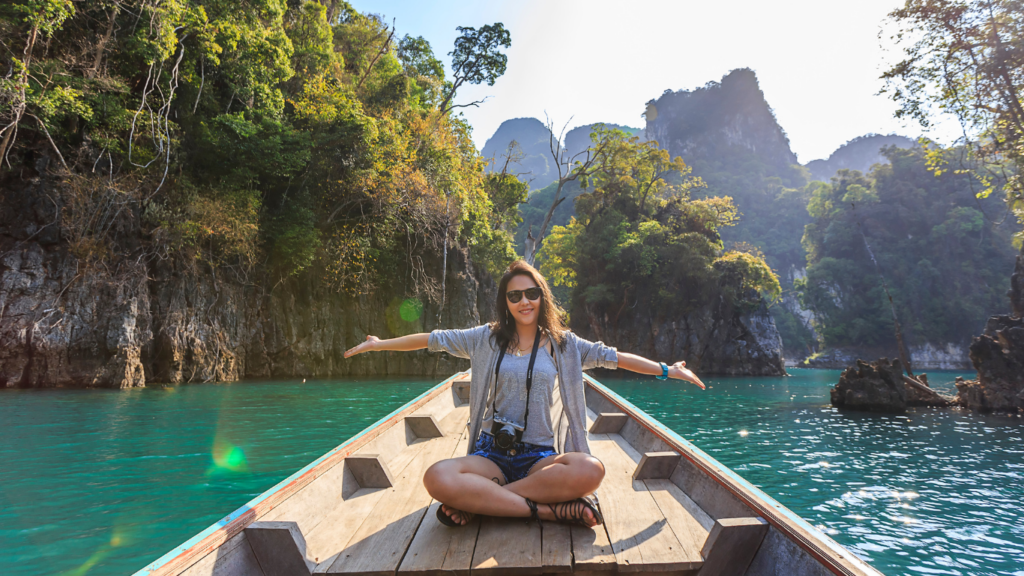What Makes a Great Adventure Travel Destination?
A great adventure travel destination offers diverse landscapes, challenging activities, and cultural immersion. Unique environments such:
- as mountains
- jungles
- oceans
provide ample opportunities for exploration. Locations with a variety of terrains let travelers find excitement, regardless of their skill levels.
Diverse Landscapes
Natural environments, like mountains and rainforests, provide stunning backdrops for adventure activities. For example, the Himalayas offer exceptional trekking paths with breathtaking views, while the Amazon rainforest immerses explorers in rich biodiversity.
Challenging Activities
Key elements include activities that push travelers to their physical or mental limits. Popular activities like:
- rock climbing
- white-water rafting
- scuba diving
provide thrilling experiences. For instance, climbing Kilimanjaro challenges endurance, and navigating the rapids of Colorado River requires teamwork and resilience.
Cultural Immersion
Engaging with local cultures enhances the adventure experience. Interactions with indigenous tribes, participating in local festivals, and tasting regional cuisines offer deeper insights into the destination. Visiting Peru allows one to experience the Incan culture, while festivals in India provide vibrant cultural immersion.
Accessibility and Safety
A balance between accessibility and safety is crucial. Well-maintained trails, professional guides, and clear signage ensure safe navigation. Places like New Zealand’s Milford Track offer marked routes, while professionally guided safaris in South Africa guarantee safe encounters with wildlife.
Sustainable Practices
Sustainable tourism practices protect the environment and support local communities. Eco-friendly lodges, conservation tours, and low-impact activities preserve natural resources. Costa Rica’s eco-lodges and conservation efforts demonstrate commitment to sustaining the environment for future travelers.
Criteria for Selecting the Top 10 Destinations

Several criteria define the best adventure travel destinations. Understanding these factors ensures a more enriching and safe experience.
Diverse Landscapes
The destination must offer a variety of landscapes. Mountainous regions, coastal areas, deserts, and rainforests provide different adventure activities. For example, climbers prefer mountains like the Himalayas, while divers look for coastal reefs.
Challenging Activities
Activities available at the destination must be both exhilarating and challenging. Rock climbing, white-water rafting, and skydiving appeal to thrill-seekers. Trekking and mountain biking offer physical challenges and breathtaking views.
Cultural Immersion
Engaging with local cultures enhances the adventure. Traveling to destinations rich in history, traditions, and local customs provides unique experiences. Examples include attending local festivals and exploring ancient ruins.
Accessibility and Infrastructure
Good accessibility and reliable infrastructure are essential. Efficient transportation networks and well-maintained facilities ensure a smooth travel experience. For example, well-connected airports and road networks make remote areas accessible.
Safety Measures
Safety is paramount in adventure travel. Destinations must have established safety protocols and emergency services. Certified guides and regular equipment checks ensure the safety of participants in adventure activities.
Sustainable Tourism
Sustainable tourism practices protect the environment and support local communities. Eco-friendly accommodations, responsible tour operators, and community-based tourism ensure minimal environmental impact. Examples include staying in eco-lodges and participating in conservation projects.
Top 10 Adventure Travel Destinations You Can’t Miss
Adventure travel promises unparalleled excitement and discovery. These ten destinations offer diverse landscapes and thrilling activities for every daredevil.
Destination 1: Patagonia, Argentina & Chile
Patagonia spans southern Argentina and Chile, offering vast wilderness and dramatic landscapes. Hiking the Torres del Paine or the Fitz Roy range provides unforgettable views. Travelers can also embark on glacier trekking in El Calafate.
Destination 2: Queenstown, New Zealand
Queenstown is the adventure capital of the world. It’s known for bungee jumping, skydiving, and jet boating. The nearby Remarkables mountain range and Lake Wakatipu provide a stunning backdrop for these activities.
Destination 3: Interlaken, Switzerland
Interlaken, nestled between Lake Thun and Lake Brienz, is a hub for outdoor adventures. Paragliding over the Swiss Alps, canyoning in the local gorges, and skiing in the Jungfrau region are top draws.
Destination 4: Banff, Canada
Banff, located in Alberta, offers rugged mountainous terrain. Visitors can hike, ski, and rock climb in the Canadian Rockies. The Banff National Park boasts beautiful lakes and an abundance of wildlife.
Destination 5: Iceland
Iceland’s unique landscapes include glaciers, volcanoes, and waterfalls. Ice climbing on glaciers, snorkeling between tectonic plates at Silfra, and exploring lava caves are quintessential experiences. Are you up for a short 4-Day Travel in Iceland within an alluring budget?
Destination 6: Costa Rica
Costa Rica is a haven for eco-adventurers. Zip-lining through Monteverde Cloud Forest, surfing at Tamarindo Beach, and white-water rafting on the Pacuare River showcase the country’s natural beauty.
Destination 7: Utah, USA
Utah’s national parks, like Zion and Arches, offer incredible red rock formations and canyons. Hiking the Narrows in Zion and mountain biking in Moab are must-try activities.
Destination 8: Bhutan
Bhutan, nestled in the Himalayas, has treks like the Snowman Trek, known for its difficulty. The country’s monasteries and fortresses provide cultural insights alongside challenging hikes.
Destination 9: Nepal
Nepal is famous for trekking routes in the Himalayas, such as the Everest Base Camp and the Annapurna Circuit. The country’s rugged landscape offers mountaineering and cultural exploration.
Destination 10: Tasmania, Australia
Tasmania, an island state of Australia, boasts diverse wilderness areas. From trekking the Overland Track to mountain biking in Derby, Tasmania promises a wide range of adventures.
Tips for Planning Your Adventure Trip
Research the Destination
Gather as much information as possible about your chosen destination. Check weather conditions, necessary permits, and local laws. Read reviews, travel blogs, and guides to understand the best times to visit and must-do activities. When you review past traveler experiences, you gain valuable insights that help in detailed planning.
Prepare Physically
Ensure you’re in good physical condition to handle the adventure activities. Start a fitness routine that includes cardio, strength training, and flexibility exercises. For example, hikers may benefit from endurance training, while divers could focus on breathing exercises. Being physically prepared enhances your overall experience.
Pack Appropriate Gear
Choose your gear based on the activities and weather conditions of your destination.
- Use a packing list to remember essentials like sturdy hiking boots, weather-appropriate clothing, and safety equipment
- In colder climates, layers and insulated clothing are crucial. High-quality gear can make your adventure more comfortable and safe.
Plan Your Itinerary
Craft a detailed itinerary that includes all planned activities, accommodation, and transportation. Allocate extra time for unexpected delays or spontaneous detours. Balance high-energy activities with downtime to avoid burnout. A well-structured itinerary ensures you make the most of your adventure.
Budget Wisely
Estimate your trip expenses, including travel, accommodation, meals, gear, and activity fees. Set aside an emergency fund for unexpected costs. Consider using an online budgeting tool to organize your finances and track expenses during the trip. Staying within your budget allows for a stress-free adventure.
Secure Travel Insurance
Get comprehensive travel insurance that covers adventure activities. Check for policies that include trip cancellations, medical emergencies, and lost baggage. Compare different insurers to find the best coverage for your needs. Insurance provides peace of mind and financial protection during your travels.
Understand Local Culture
Learn about the local culture and customs of your destination. Research basic phrases in the local language, traditional practices, and social norms. Respect for local customs enhances your cultural experience and fosters positive interactions with locals.
Prioritize Safety
Stay informed about potential risks and safety concerns in your destination. Register with your embassy, know the location of the nearest medical facilities, and keep emergency contact numbers handy. Adhere to safety guidelines and regulations for each activity. Prioritizing safety ensures a secure and enjoyable trip.
Minimize Environmental Impact
Practice eco-friendly travel habits. Use reusable water bottles and bags, minimize waste, and choose sustainable transportation options. Respect natural habitats and local wildlife. Reducing your environmental footprint helps preserve the destination’s beauty for future travelers.
Consider Group vs. Solo Travel
Decide whether you’d prefer a group adventure or a solo trip. Group travel offers the advantages of shared experiences, guided tours, and safety in numbers. Solo travel provides flexibility and independence. Weigh the pros and cons based on your preferences and comfort level.




